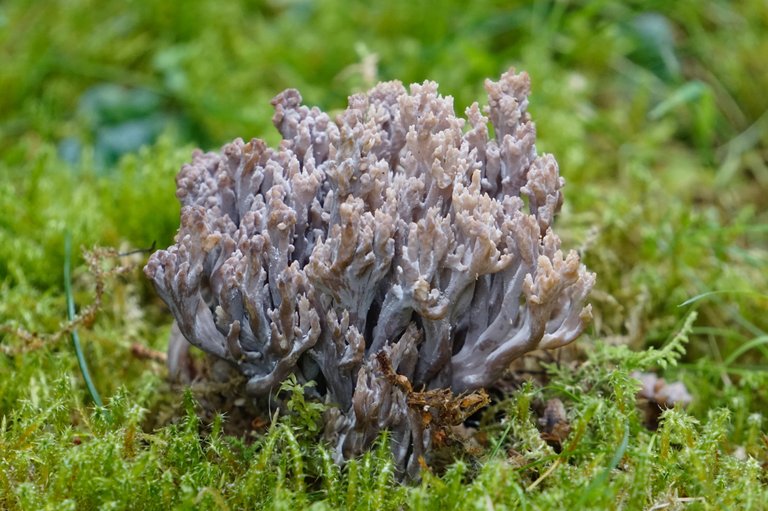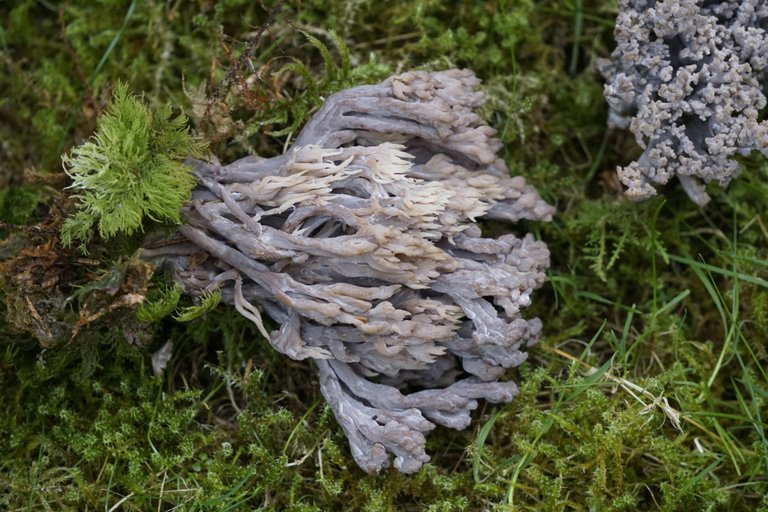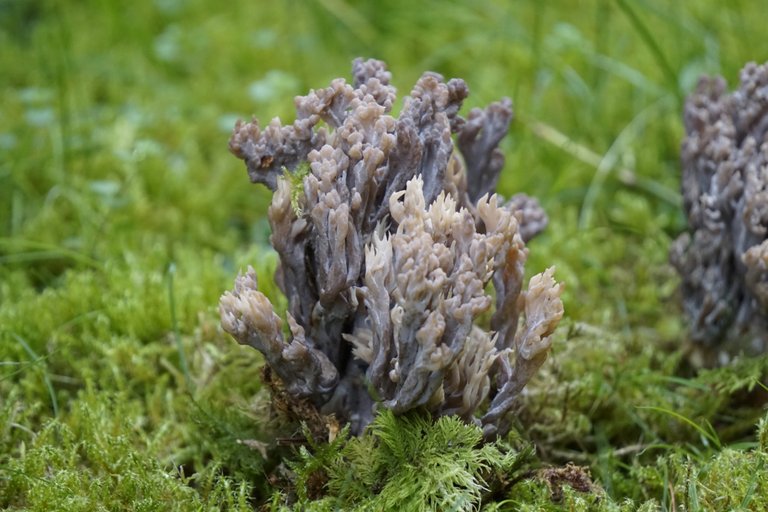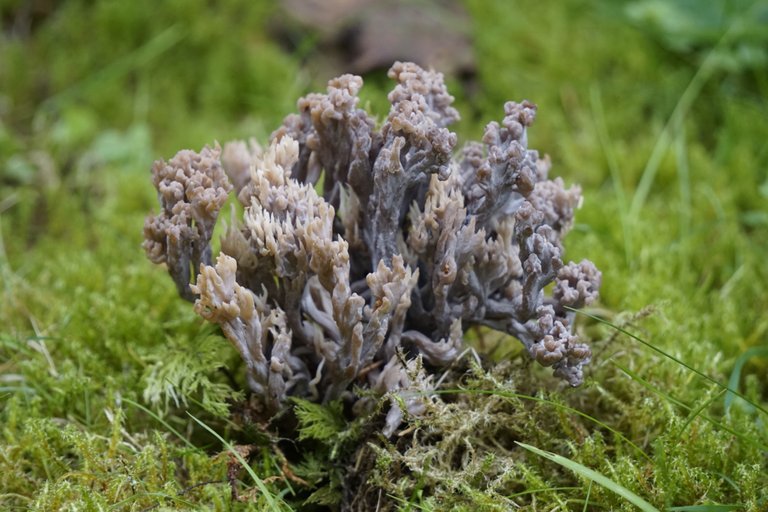Gray Coral (Clavulina cinerea)
Hey dear community, first of all I would like to welcome you to my new contribution and hope you have a great day which is full of interesting experiences! In this article I would like to go into nature and introduce a unique mushroom and I am happy if you can learn new things.
Here you can see pictures of the Gray coral which is also known under the scientific name Clavulina cinerea and as at first glance may suggest, it is not an creature of the oceans but a fungus which immediately catches the eye due to the unusual appearance. The first mentions can already be traced back to the 18th century and in the meantime it has been documented in many parts of the earth and it is a more frequent fungus which is widespread in Europe, Asia or America and could maybe also be found on other continents, but less common. The Gray coral usually appears relatively late in the year after the end of summer or autumn and it can also be found after the begin of frost until late in the year and can be described as extremely resistant to cold. It can be found in mixed forests or on rotten wood and is often overlooked because of its compact size or unusual appearance and it's also a typical fungus that goes into symbiosis with trees to exchange nutrients. It is an edible fungus which has interesting medical properties and can have a positive effect on the whole body and help stimulate the immune system and the effect on the human brain is also interesting and it was discovered that it improves performance and people can better handle informations or process them. As always, I would like to mention that people looking for mushrooms should always have a certain skepticism because there can often be confusion with other specimens and therefore it's advisable to simply leave unknown mushrooms or seek additional advice to avoid complications! In young specimens, the color is still brown and gets the typical gray color with increasing age, which can also turn black over time and this is an indication to better not to consume it anymore and it is also very important to mention that it should be heated sufficiently before consumption and it should never be consumed raw!
Many thanks for stopping by and I hope you could learn something new about nature! I captured these pictures with my Camera Sony Alpha 6000 plus 55-210 mm lens.





This is a strange fungus, it is also found in Asia, I live in Asia but have never seen it. Glad to know that it has many medicinal properties and boosts immunity.
It is really a unique mushroom and interesting that it looks like a coral! I hope you will find some specimens in the future :)
I don't know about it, but I got to know through your post, it's very good that it has medicine work.
The medicinal effect is indeed one of the most important properties when it comes to fungi! Happy that you were able to learn new things :)
It is always important to know which mushrooms can be consumed and which cannot, friend; certainly finding them like this in nature is so cool
Good that you mention it again!
Nice pictures!
I did not know about this mushroom before, but I'll definitely look for it next time I walk through the forest. It sounds very interesting.
Wish you success in your next search!
Such things that we see in the forest or in such a place are very special and add a lot to our knowledge. How can participate in a competition?
That’s right! There is so much to learn about the topic, I don’t participate in any contest but I think there is a fungi friday here on the blockchain.
Knowing mushrooms that we can eat and the ones we can’t is very important so we won’t eat what isn’t good for our body
Well said!
Its looks like its a weed wild but really informative and very good properties.
Happy to read your kind feedback :)
https://x.com/lee19389/status/1855723271980814760
#hive #posh